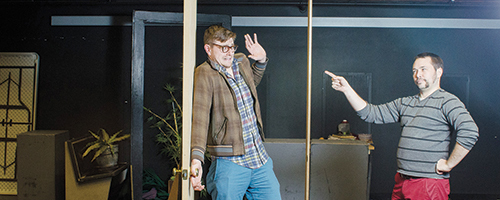Clinical assistant professor in Speech and Hearing Sciences Jennifer Larsen has spent the last 18 years as a speech language pathologist and worked on and off at Portland State.
Class profile: ‘Speech and Language Development in Children’
Clinical assistant professor in Speech and Hearing Sciences Jennifer Larsen has spent the last 18 years as a speech language pathologist and worked on and off at Portland State.
This fall, Larsen became a full-time faculty member and began teaching the “Speech and Language Development in Children” course.
An undergraduate class that studies language development in children, it starts with birth and progresses to the teenage years. The course covers several important theories in language development.
“We talk about concurrent skills or supportive skills that are related to language development—so basic cognitive skills,” Larsen said.
The class also discusses speech development—how kids learn to produce the sounds of their language. Larsen said another important aspect is to know all major milestones and age-level expectations: what a 2-year-old should be able to do versus what a 10-year-old should be able to do.
The course is a combination of lecture, discussion and hands-on projects in the classroom. “We might watch a video of a child at a certain age and talk about what types of language behaviors we see,” Larsen said.
The class also gets a chance to discuss different ways adults within a child’s environment can enhance the child’s language. Larsen said the class may watch videos demonstrating techniques that an adult might use that would be supportive of language development.
The students who take this course often vary widely. It is a University Studies junior cluster course within the Family Studies cluster. Within the major, this course is a prerequisite for the language disorders course.
“Particularly for students who are entering the field of speech language pathology, it’s essential that they understand normal language development,” Larsen said. “Because they will be working with kids with language disorders, they need to understand what’s typical before they can understand what’s not typical.”
Larsen also emphasized how important this course could be for people going into a field in which they work with kids.
“Child development, child care providers, teachers, social workers—for anyone working closely with kids it’s very, very important to have a solid understanding of normal language development.”





